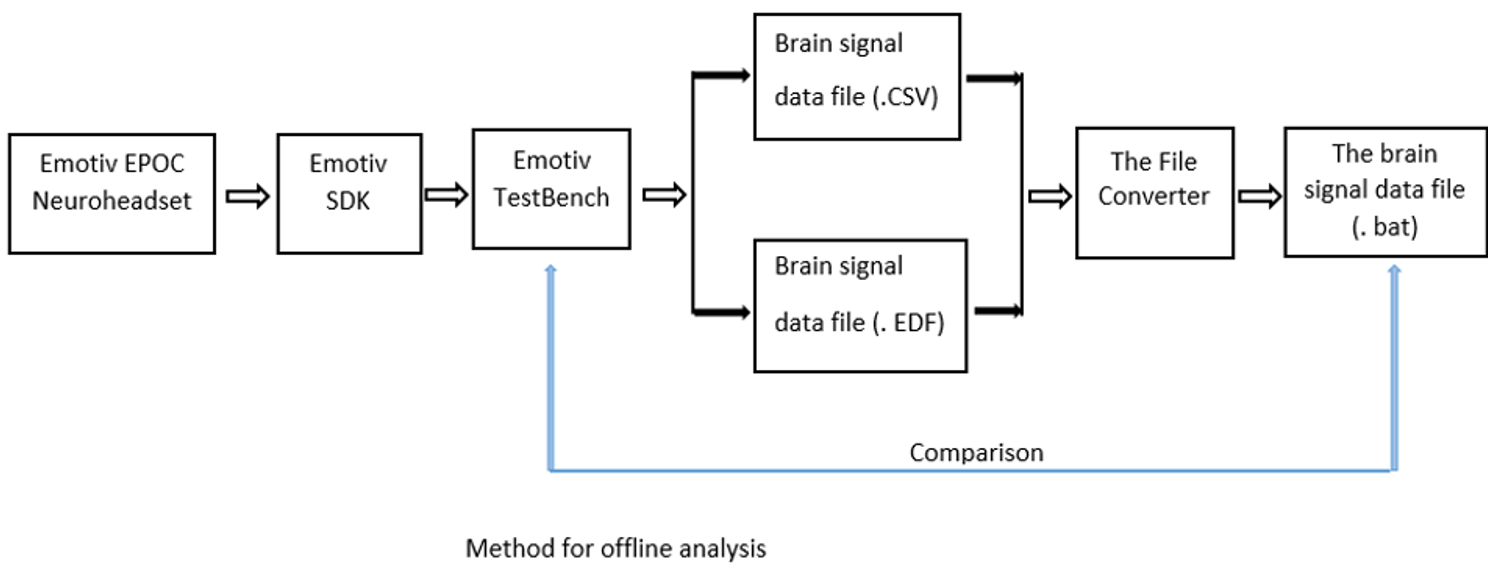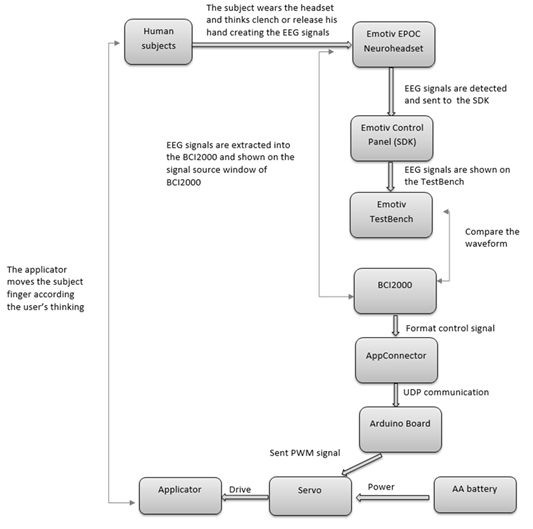Projects:2015s1-35 Brain computer interface control for biomedical applications
Contents
Project Instruction
Objectives
The aim of this project is to design a brain computer interface system for stroke patients. The Emotiv EPOC neuroheadset is used to obtain brain signals, while BCI2000 software platform is utilized to design a signal processing software. A robotic hand is designed to support stroke patient’s hand and give feedback. The system should be able to identify users’ intention of moving fingers, and let the robotic hand move as intended.
Motivation and Significance
According to current researches, on average, for every 10 minutes, an Australian will have a stroke. Besides, stroke costs Australian economy 5 billion dollars a year [23]. In this context, designing a brain computer interface system to help stroke patients regain motor control is a great idea, since this may greatly improve their quality of life and also release the burden on economy.
This project is inspired by the previous work of Traeger and Reveruzzi, which is a similar application of brain computer interface system in biomedical usage [1][2], as well as the earlier work of Wolpaw and McFarland [3][4]. Besides, the theory of Neuroplasticity indicates that by imagining limb movements, neuros in brain may create new pathways instead of the impaired ones to reconstruct the connection with motoring muscles, thus regain control of their limbs. However, these researches mentioned above either focus on arm movement, or uses expensive and complicated devices to achieve robotic hand control. Therefore, we intend to design a cost-effective brain computer interface system that can control robotic hand in this project.
With the help of this system, stroke patients can train their brains so as to rebuild the connection between the brain and motor muscles, and in the end regain motor function. Furthermore, the output of this project may help other researches based on BCI systems, and it can be improved to achieve more complex finger movements.
Requirements
The basic goal of this project is to be able to identify the movement of five fingers, while the optional goal is to be able to identify the movement of each finger individually. Besides, the applicator should be able to move continuously as the user imagines to move.
Background
Brain Computer Interface System
System Design
Signal Acquisition
Signal Processing
Applicator
Project Outcomes
Project Management
Team Members
Supervisors
Work Breakdown
Budget
Risk Analysis
Team
Team Member
Supervisors
References
The aim of this project is to utilize the Emotiv Brain Computer Interface system to develop and control a robotic limb support system for stroke patients. The Emotiv allows non-invasive recording of electrical brain activity (EEG), which will be utilized for controlling an applicator. The Emotiv also includes a software development kit. Students will acquire skills in signal processing, feature extraction and feature classification. Further, the students will gain experience by designing a basic medical device.


